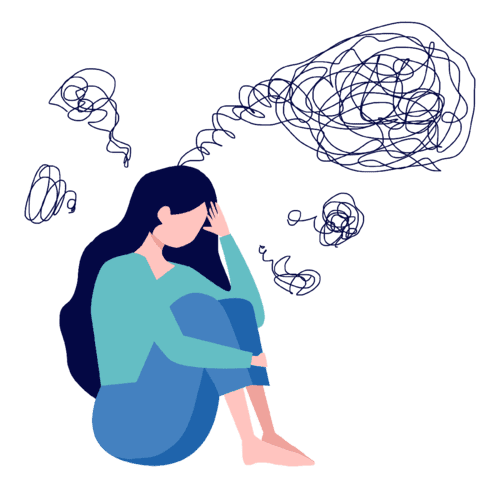Sensorimotor OCD Assessment
Free Sensorimotor OCD Assessment

What is Sensorimotor OCD Assessment?
Sensorimotor OCD Assessment involves evaluating and diagnosing a specific subtype of Obsessive-Compulsive Disorder (OCD) characterized by distressing bodily sensations and hyperawareness of internal bodily processes. It entails assessing the individual’s preoccupation with bodily functions, such as breathing, swallowing, or blinking, and the compulsive behaviors or mental rituals performed to alleviate anxiety related to these sensations. Assessment tools include structured interviews, self-report questionnaires, and clinical observations. Understanding the severity, impact on daily life, and the presence of related symptoms aids in determining an accurate diagnosis and formulating an appropriate treatment plan, often involving cognitive-behavioral therapy (CBT) and/or medication.
Who can benefit from this Sensorimotor OCD Assessment?
The Sensorimotor OCD Assessment can benefit individuals who experience intrusive thoughts and compulsions related to bodily sensations and movements. This assessment is particularly valuable for those seeking to understand and manage their symptoms, as well as mental health professionals aiming to diagnose and provide targeted treatment. It aids in identifying the presence and severity of sensorimotor OCD, enabling tailored therapeutic approaches and interventions. Additionally, individuals struggling with unexplained physical sensations or movements that lead to distress can gain insights into their condition through this assessment, ultimately fostering improved mental well-being and a higher quality of life.
Sensorimotor OCD Assessment Accuracy
Sensorimotor OCD assessment accuracy depends on various factors, including the assessment tools used, the expertise of the assessor, and the specific characteristics of the individual’s symptoms. Generally, accurate assessment involves comprehensive evaluation of sensory and motor obsessions, along with related compulsive behaviors. Diagnostic criteria, clinical interviews, and self-report scales contribute to accurate diagnosis. Collaborative efforts between mental health professionals and individuals experiencing symptoms enhance assessment precision. Nonetheless, misdiagnosis remains a possibility due to the complex nature of OCD subtypes and potential overlap with other conditions. Regular updates in assessment guidelines and clinician training are crucial for maintaining accuracy.
Types of Sensorimotor OCD Assessment
Clinical Interviews:
A detailed clinical interview with a mental health professional is often the first step in assessing Sensorimotor OCD. The clinician will ask questions about the individual’s symptoms, their history, the duration and intensity of symptoms, triggers, and any related distress or impairment.
Self-Report Questionnaires:
Various self-report questionnaires can help assess the severity of Sensorimotor OCD symptoms and their impact on an individual’s life. The Yale-Brown Obsessive Compulsive Scale (Y-BOCS) is a commonly used tool that measures the severity of OCD symptoms, including Sensorimotor symptoms.
Structured Clinical Interviews:
Tools like the Structured Clinical Interview for DSM Disorders (SCID) can help clinicians systematically assess for the presence of specific OCD symptoms, including those related to Sensorimotor OCD.
Diagnostic Criteria:
Assessing whether the individual’s symptoms align with the diagnostic criteria for OCD, as outlined in the Diagnostic and Statistical Manual of Mental Disorders (DSM-5), is an important step. For Sensorimotor OCD, symptoms might involve obsessions and compulsions related to bodily sensations or movements.
Observational Assessments:
In some cases, clinicians might observe the individual’s behavior to gain insights into their symptoms. This might involve noting any repetitive movements, behaviors, or rituals that are indicative of Sensorimotor OCD.
Functional Assessment:
Understanding how Sensorimotor OCD symptoms impact an individual’s daily functioning is crucial. Assessing how these symptoms interfere with work, relationships, and overall quality of life helps determine the level of impairment.
Handling Sensorimotor OCD Issues
Sensorimotor OCD, also known as “Pure-O” OCD, is a subtype of obsessive-compulsive disorder (OCD) where individuals experience distressing obsessions related to bodily sensations, movements, or internal processes. These obsessions often lead to compulsive behaviors or mental rituals in an attempt to alleviate the distress. Here are some steps that might help in handling sensorimotor OCD issues:
- Educate Yourself: Understand what sensorimotor OCD is and how it manifests. Learning about the nature of OCD can help you recognize the symptoms and differentiate them from other issues.
- Professional Help: Consult a mental health professional, preferably one with experience in treating OCD. Cognitive-behavioral therapy (CBT), particularly Exposure and Response Prevention (ERP), is considered the most effective treatment for OCD. ERP involves gradually exposing yourself to the feared sensations or situations while refraining from engaging in compulsive behaviors.
- Medication: In some cases, medication may be recommended by a psychiatrist. Selective serotonin reuptake inhibitors (SSRIs) are commonly prescribed for OCD, as they can help alleviate the symptoms.
- Mindfulness and Acceptance: Practicing mindfulness can help you become more accepting of uncomfortable sensations without trying to control or eliminate them. Mindfulness meditation can help you observe your sensations without reacting to them compulsively.
- Exposure Exercises: Work with your therapist to create a hierarchy of exposure exercises that gradually expose you to the sensations that trigger your obsessions. This can help you build tolerance to the distress and reduce the urge to perform compulsive behaviors.
- Response Prevention: Refrain from engaging in the compulsive behaviors that you use to relieve the distress caused by your obsessions. Over time, this can help weaken the connection between the obsessions and the need to perform rituals.
- Challenge Negative Thoughts: Challenge the irrational beliefs associated with your obsessions. OCD tends to be driven by irrational fears. Learning to challenge these thoughts can help reduce their power over you.
- Practice Self-Compassion: Be kind to yourself and understand that you’re not defined by your OCD. It’s a condition you’re dealing with, and recovery takes time and effort.
- Healthy Lifestyle: Maintain a balanced lifestyle with regular exercise, proper nutrition, and adequate sleep. Physical well-being can have a positive impact on your mental health.
- Support System: Share your struggles with trusted friends or family members. Having a support system can make the journey less isolating and more manageable.
- Journaling: Keeping a journal can help you track your progress, note triggers and patterns, and express your thoughts and emotions.
- Distraction Techniques: Engage in activities that occupy your mind and prevent you from focusing on the distressing sensations. This can help reduce the intensity of the obsessions.
Remember that progress might be gradual, and setbacks are normal. Patience and consistent effort are key components of managing sensorimotor OCD. Working closely with a mental health professional will provide you with the guidance and tools needed to address these challenges effectively.

